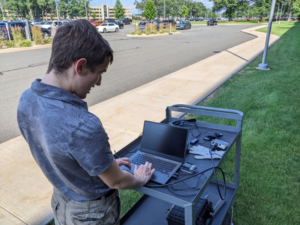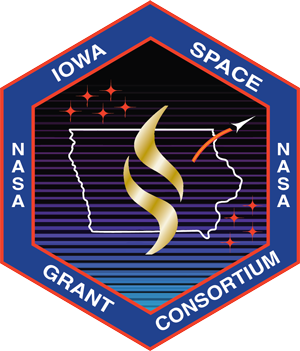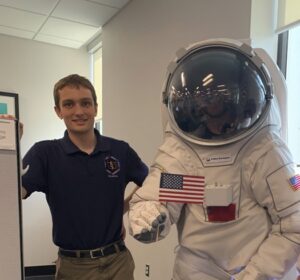 Final Goals of your Project/s:
Final Goals of your Project/s:
The Water Processing Assembly (WPA) is one of the many complex systems on the International Space Station. It is responsible for recycling sweat and urine into potable water, reducing the amount of water needed to supply the station. Leto is an ongoing Collins Aerospace project to predict failures in life support systems with the purpose of creating remaining useful life models for various components. My main role was to develop a machine-learning model for general-purpose anomaly detection, which if successful, could be included as a feature in Leto to analyze any life support system for potential upcoming failures.
In addition to Leto, I also contributed to the Haughton-Mars Project (HMP). This is a long-running project to determine how humans would live and work on Mars, and its scope extends far beyond this report. My task was to help develop and improve a piece of software known as Hodos, a voice-and-motion-operated user interface displayed on a pair of augmented reality glasses. This technology reveals vital statistics and allows the user to view their position and objectives on an interactive, 3-dimensional map. My tasks were to improve the user interface layout, add new information to the heads-up display, and improve the motion controls for navigating the map. I worked on this project in parallel with Leto throughout the Summer.
Describe what you did during your internship:
For the Leto project, my original task was to create a remaining useful life model for a filter in the WPA. Unfortunately, the lack of sensors around this filter proved prohibitive. After a week of trying and failing to work around this restriction, my supervisor instead directed me to flesh out a concept for anomaly detection in the WPA using machine learning. The ML technique is designed to analyze a set of relevant sensor data for any given day and to determine whether it is unusual. To find the most effective parameters for the algorithm, I wrote a set of algorithms dubbed the “anomaly pipeline” in Jupyter Notebook, which would access a database of WPA data, train hundreds of ML algorithms, score them based on some criteria that I modified over the summer, and return the model with the best score.
I designed a new layout for Hodos as shown in my report. This interface is displayed on a set of augmented reality glasses and a small screen external to the analog spacesuit, both with the same layout. To improve the testing experience, I also added indicators for the device’s battery percentage and CPU temperature. Hodos is mainly operated using voice commands, but the user may also navigate the map using a proprietary smart glove. The glove’s motion controls were originally far too sensitive, but after I turned the sensitivity down and extended the dead zones on the more sensitive axes, the other project members found the glove easier and even fun to use.
Did you achieve your goals? What were the results?:
For the Leto project, although I cannot reveal the precise set of metrics gathered in the data access phase or the most successful scoring methods used, I can say that most attempts resulted in models with poor adaptability or too little sensitivity. Some phases of the WPA’s history seem harder to generalize than others; many models performed well when testing on recent data but seemed incapable of getting coherent results on data deeper into the WPA’s history.
More effective methods to score the models could be developed, but by the end of the internship, I was beginning to opine that our current machine-learning algorithm might have limited utility. On the positive, we found useful techniques for visualizing the data. Hodos is a prototype and is still very much a work in progress, and it is still missing many useful features that would be useful on real missions, such as displays for oxygen and water levels. If the external display proves more intuitive to use than the AR glasses, a special interface layout for the screen would be a welcome addition.
The number of other hardware components makes setting up Hodos a lengthy endeavor even before adding vital sensor connections, but it should be possible to streamline the process somewhat with better software automation and clear error messages when a device is connected incorrectly. Despite our efforts earlier in the Summer, Hodos still cannot download and save a map from ArcGIS for offline use, but our testers can work around it for now by starting Hodos while connected to the internet and moving the map camera along the desired route.
Describe positive lessons learned:
Trying and failing is an important part of research and development. In many cases, finding a method that won’t work is just as important as finding one that does. Who you work with is just as important as how passionate you are about the work itself. Luckily, this job scored well in both metrics.
Describe negative lessons learned:
The aerospace industry is highly bureaucratic. As an example, it took me the better part of a month to install the software necessary to make my contributions to the Haughton-Mars Project. As another example, I had my report done by August 10, but it only got approved for export yesterday. When budgets are tight due to a fellow subsidiary having to fix faulty engines, internal research and development is among the first things to get its funding cut. Collins Aerospace is a large company, and although I had a good time overall, experiences can vary among individuals.
Impact: Having an internship in a part of the country I’ve never been to before was a fun experience, and this may be a good career path for me. The next step is to decide whether I want to continue this project next summer or strike off on a new adventure. In the former case, my qualifications would be obvious, and if I do the latter, the experience will enable me to get into almost any related job. This internship was important regardless of which path I take.

